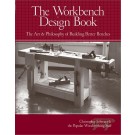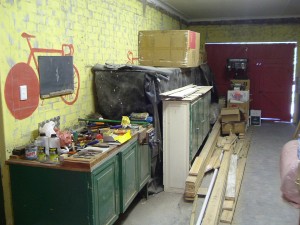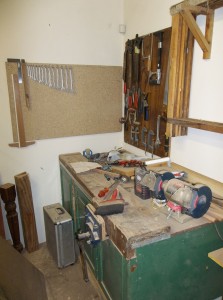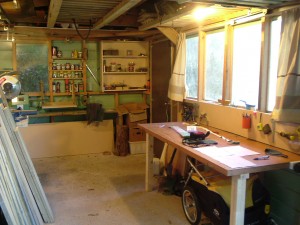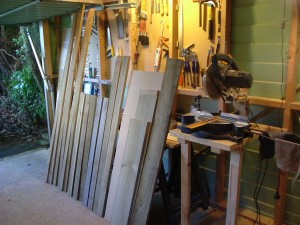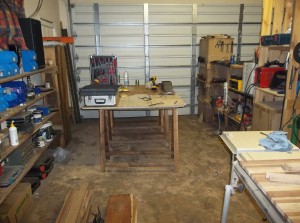I decided to build an assembly table that doubles up as a workbench as a first option. The plan is to extend the workshop at some point in future, at which time I will build the proper bench and have the benefit of having two dedicated areas for each task. For now I have to live with something that can do most of what a good bench can do (but not quite) and all that can be expected of an assembly table. At the moment I am thinking that my dream bench will probably be a variation of the so called Holtzapffel design. I am slowly working through the two books by Christopher Schwartz on the topic.
The main reason I decided to go for the assembly table setup first was that I thought I could get more out of it as an all-round working surface. This is obviously open to debate and as these things go, I have learnt about the shortcomings of my setup only since using it. I will get back to that later on in this particular novel.
As this was my first project in my current shop after a 3 year hiatus away from any shop work, I thought it would be better to do something less involved before building my dream bench. This way I will have a surface to work on and get an opportunity to first hone my skills a bit. It also provides time in the shop to find out what type of bench would work best for me. I also had a serious lack of tools at that point in time, as everything I collected over the past years (in Kiwiland) were stolen between New Zealand and Namibia when we moved here.
The assembly table I designed included heaps of ideas from past frustrations with not having a proper bench and ideas found on the internet. However the bulk of the design came from the Festool MFT worktables.
So let’s go back to first explore where this so called experience/frustration with inadequate benches comes from. The first attempt at setting up a shop of my own was back in 2000 in the garage of our first house. This was in my home town of George on the south coast of South Africa. The bench I used was one that my father built many years ago. It has a steel carcass, cladded with wood. As my father used to be mainly a power tool woodworker it served him well. It served me well in those early years too, but later on while living in New Zealand I was force to become more hand tool orientated due to the cost of having to set up a new shop from scratch as I did not take any tools along. The bench is not ideal for hand tool work due to it’s limited work holding options. It reminds me of another reason I went for the assembly table setup as a first step and that is that I still have the green bench when I need to whack the daylights out of a piece of wood. Please note that this photo was taken while the shop was dormant during the 8 years we lived in New Zealand and only acted as a wood storage facility.
Below you see it in it’s new home in Windhoek.
In the pictures below you can get an idea of the frustrations I faced in the small single garage where I tried to do some basic work in New Zealand. The bench is a fire door on a hinge and two legs that can be removed quickly to enable the door to swivel down when the car wants to get back in it’s little house. The same goes for the Mitre saw which swiveled up during the vehicle’s sleeping hours. You can clearly see how this so called bench also lacked work holding abilities. This might be one reason why my current working platform has work holding options coming out of it’s ears.
In my current shop I started off working on a piece of plywood on top of collapsable sawhorses that I built in 2000. This is obviously an frustration in itself. The sawhorses were even more keen than my dogs to take a walk (due to their collapsable nature) when ever pressure were applied in a horizontal direction.
With all of that done you should have a good idea of what I have been through with ‘benches’ that might influence the design of the next working surface.
In our next thrilling chapter, we can then get on to the building of the actual bench and I am pretty sure you are going to have several sleepless nights waiting in ecstatic anticipation for it.


